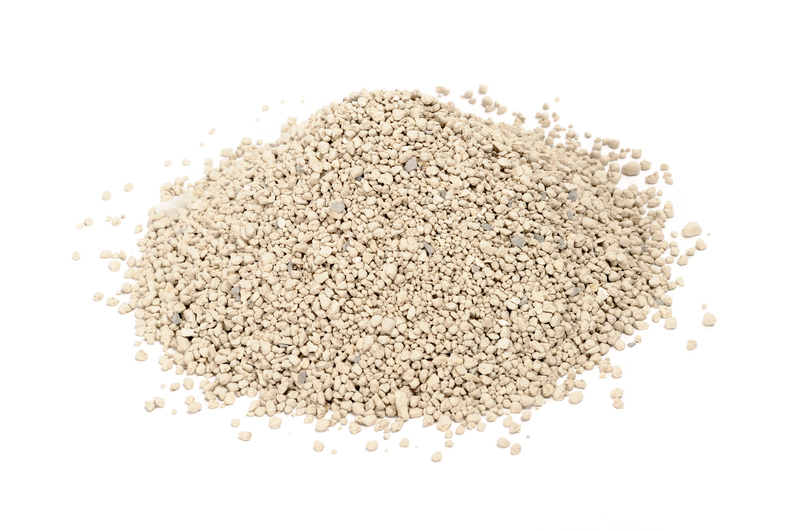The Art of a Pristine Enamel Oven Tray: Wave Goodbye to Grease
Posted on 05/09/2025
The Art of a Pristine Enamel Oven Tray: Wave Goodbye to Grease
Maintaining a sparkling enamel oven tray can feel like an elusive dream--especially when baked-on grease and grime seem determined to stick around. However, with the right techniques, tools, and a little bit of know-how, you can restore your enamel oven tray to its former glory and keep it looking spotless meal after meal. This guide will walk you through everything you need to know about cleaning, caring for, and preserving your enamel oven trays for the long haul.

Why Clean Enamel Oven Trays Matter
Enamel trays are prized in kitchens worldwide for their durability, heat distribution, and resistance to rust. Yet, after just a few uses, even the highest quality enamel can become discolored and greasy. Regular and thorough cleaning is essential not just for aesthetics, but for:
- Preventing cross-contamination: Old grease can harbor bacteria.
- Maintaining food flavor: Residual grease and burnt bits can taint future recipes.
- Enhancing oven efficiency: Clean trays promote even heating and cooking.
- Preserving your investment: Well-maintained enamel trays last for years and retain their lustrous finish.
- Reducing smoke: Grease buildup can cause unpleasant smoky odors and even be a fire hazard.
Ready to wave goodbye to grease and embrace the art of a clean enamel oven tray? Let's dive into the best methods and practices for a grease-free, gleaming kitchen essential.
What Makes Enamel Oven Trays Special?
Before you embark on a cleaning spree, it's crucial to understand why enamel-coated oven trays have their own unique cleaning requirements. Unlike simple metal trays, enamel is a glass-like coating bonded to metal, typically steel or cast iron. This fusion provides several benefits:
- Non-reactive surface: Enamel doesn't interact with acidic foods like tomatoes or citrus.
- Easy release: Food is less likely to stick compared to bare metal trays.
- Corrosion resistance: The enamel coating protects against rust and pitting.
However, enamel isn't invincible. Abrasive cleaning methods or overly harsh chemicals can damage the coating, causing chips or dullness. That's why mastering the gentle art of grease removal is so important for these trays.
The Most Common Enemies: What Causes Oven Tray Grease Build-Up?
- Cooking with high-fat foods: Bacon, roasted meats, and oily vegetables all leave behind stubborn residues.
- Oven splatters: Sauces and juices bubble over, hardening during baking.
- Prolonged heat: High temperatures bake grease into a sticky, almost varnish-like layer that's tough to remove.
Understanding these causes is the first step in preventing and addressing grease on your enamel baking tray.
Wave Goodbye to Grease: Best Cleaning Practices for Enamel Oven Trays
1. The Golden Rule: Clean Promptly After Use
*After each cooking session, let your oven tray cool but don't wait too long before cleaning.* Grease and food residues harden as they sit, making removal more challenging. The sooner you tackle stains, the easier they'll lift!
2. The Power of Soaking
Soaking is the single most effective way to loosen burnt-on grease from enamel trays. Here's how to do it right:
- Fill the tray with hot water: Add a squirt of mild dish soap and a sprinkle of baking soda for extra cleaning power.
- Let it soak: Leave the tray for 30-60 minutes or even overnight for tough stains.
- Wipe clean: Use a soft sponge or non-abrasive scrubber to remove grease. Repeat if necessary.
3. Baking Soda and Vinegar: The Dynamic Duo
Baking soda and vinegar together create a fizzing action that can help break down greasy stains on oven trays:
- Sprinkle baking soda generously over greasy or burnt areas.
- Spritz with white vinegar until it fizzes.
- Allow to sit for 15-30 minutes to loosen grime.
- Gently scrub with a soft cloth or sponge, rinse thoroughly, and dry.
This non-toxic method is especially effective for those seeking a chemical-free way to clean enamel trays.
4. Dish Soap and Warm Water: Simplicity Wins
- For routine cleaning, warm water and a quality dish soap are all you need.
- Always avoid steel wool or metal scrubbers to protect the enamel's surface.
5. Tackling Stubborn, Baked-On Grease
If years of accumulated grime seem impossible to lift, it's time for a deep clean:
- Create a paste with baking soda and a few drops of water.
- Spread the paste over tough spots and let it sit for several hours.
- Scrub gently with a soft sponge or nylon brush--never anything abrasive.
- Rinse, dry, and repeat as needed until you've waved goodbye to even the most stubborn oven tray grease.
Quick Solutions for On-the-Go Cleaning
- Boiling Water Treatment: Pour boiling water over the tray, let it stand for 10-15 minutes, then scrub gently.
- Commercial Enamel Cleaners: Choose products labeled as safe for enamel, following the manufacturer's instructions carefully.
- Lemon and Salt Scrub: For a natural, fragrant clean, sprinkle salt on the tray, rub with a halved lemon, and rinse thoroughly.
What to Avoid When Cleaning Enamel Oven Trays
- Avoid harsh scouring pads: Steel wool, metal brushes, and abrasive powders can scratch and dull enamel.
- Skip caustic oven cleaners: Many conventional oven cleaning products are too harsh for enamel coatings.
- No extreme temperature changes: Pouring cold water onto a hot enamel tray can cause cracking or chips due to thermal shock.
- Don't use sharp objects: Metal spatulas or knives can chip and damage the tray's protective surface.
Preventative Maintenance for Pristine Trays
To truly master the art of clean enamel oven trays, prevention is key. Here are some easy steps you can take:
- Line trays with parchment paper or silicone baking mats when roasting sticky or fatty foods.
- Clean after each use to prevent gradual grease buildup.
- Store trays in a dry area to avoid moisture accumulation and staining.
- Check periodically for chips: Discontinue use if you notice significant chips, as exposed metal can rust and harbor bacteria.
Eco-Friendly Cleaning Tricks for Enamel Oven Trays
- Baking Soda Paste: Mix baking soda with water, apply, and let sit to lift stains without chemicals.
- Lemon Juice Brightener: Juice from a fresh lemon can help cut through grease and provide a natural antibacterial effect.
- White Vinegar Rinse: Use diluted white vinegar for a final rinse to help dissolve any remaining residue and oils.
These green methods protect both your trays and the planet.
Restoring Dull or Stained Enamel Oven Trays
Has your once-glossy enamel oven tray lost its shine? Over years of use, it's common for enamel to yellow, stain, or lose its luster. Here's how you can restore your tray's beauty:
- Make a paste of hydrogen peroxide and baking soda. Spread over stains and let sit for an hour before rinsing.
- Use non-abrasive enamel polish products. Specially designed polishes can help restore gloss when applied according to directions.
- If discoloration persists, repeated applications and gentle scrubbing will often gradually improve appearance.
Common Questions: Enamel Oven Tray Cleaning FAQs
Q: Can enamel baking trays go in the dishwasher?
A: While many enamel trays are technically dishwasher safe, frequent machine washing may dull the finish over time. Hand washing with gentle products is the best way to maintain their pristine shine.
Q: How do I remove burnt marks from my oven tray?
A: Burnt marks can usually be lifted with a baking soda and water paste or by soaking the tray with vinegar and baking soda. Persistent marks may require multiple treatments, always with non-abrasive tools.
Q: Is it safe to use commercial oven cleaners on enamel trays?
A: Most commercial oven cleaners are too strong and caustic for enamel surfaces. Opt for gentler, enamel-specific cleaners or household tricks like baking soda and vinegar for safe, effective cleaning.

Pro Tips: Elevating the Art of the Pristine Enamel Oven Tray
- Don't procrastinate: Immediate cleaning is always easiest.
- Invest in soft, high-quality sponges and brushes. These last longer and are gentle on your trays.
- Rotating trays in multi-oven households lets you allow thoroughly cleaned trays to air-dry and rest between uses.
- Keep a spare tray liner: For especially messy dishes, a reusable liner can prevent heavy stains and save cleaning time.
- Establish a cleaning routine: Weekly deep cleans prevent stains from becoming entrenched.
Conclusion: Enjoy the Satisfaction of Sparkling Enamel Oven Trays
The art of maintaining a pristine enamel oven tray is rooted in mindful care, prompt cleaning, and gentle products. By adopting these habits, you'll wave goodbye to grease for good--all while extending the lifespan of your trays and elevating your kitchen hygiene. Whether you're roasting, baking, or simply reheating, your meals will benefit from a clean cooking surface free from lingering flavors and residues.
In summary, here's what to remember for every enamel tray owner who wants to wave goodbye to grease and celebrate the beauty of a gleaming oven tray:
- Clean promptly using non-abrasive methods.
- Harness the natural power of baking soda, vinegar, lemon, and hot water.
- Avoid harsh chemicals and metal scrubbers that harm enamel.
- Practice preventative care with parchment or silicone liners.
- Restore shine with gentle pastes and polishes if needed.
Make these steps part of your kitchen routine and you'll unlock the secret to truly beautiful, grease-free enamel oven trays for years to come!





